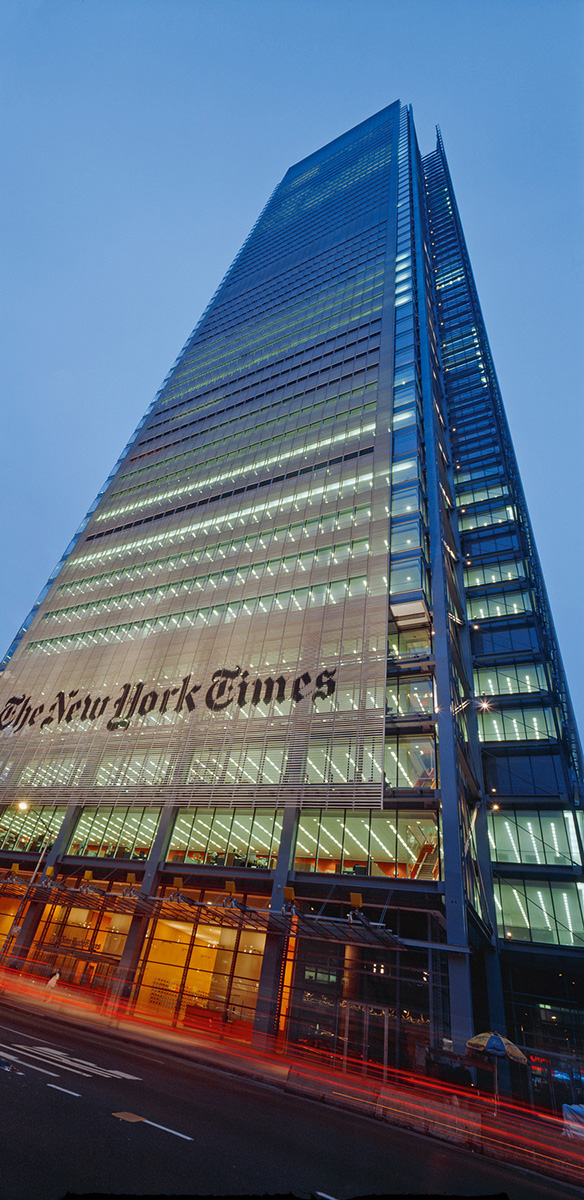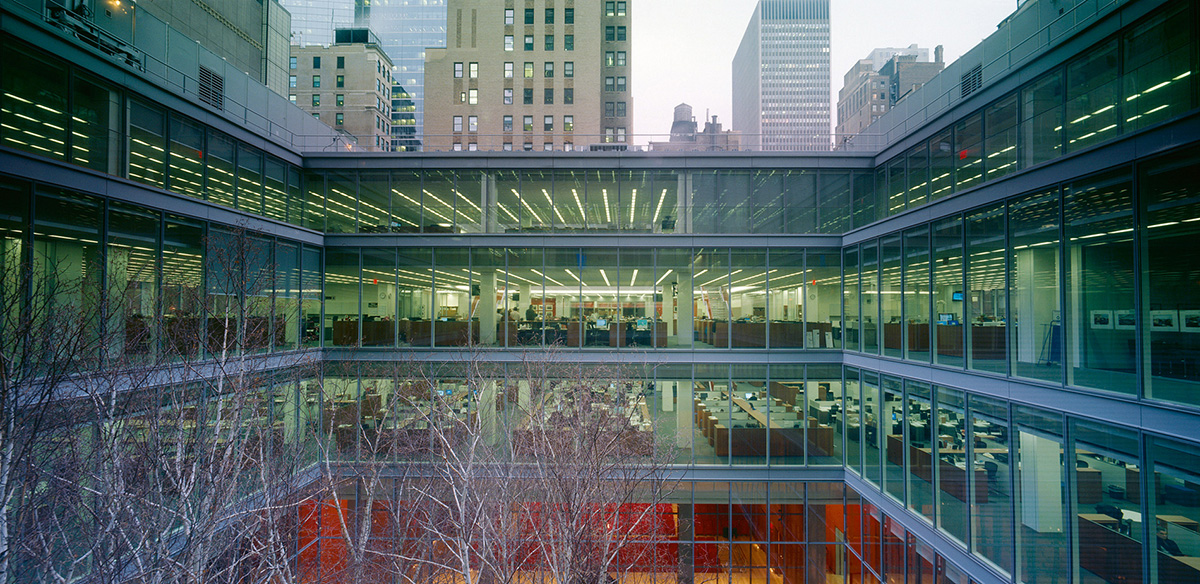Search for articles, topics or more
browse by topics

Search for articles, topics or more

We care about design, we care about production. Industry and the workshop. This is Unifor, developing and producing systems for the modern office since 1969. Product, architecture, graphic design, set up, coordinated comunication.
UniFor is this too. But above all Unifor is quality in mass production and innovation in commisioned designs. Industrial tailoring. It isn’t a coincidence that great architects come to Unifor: from Jean Nouvel for the Cartier Foundation in Paris to Renzo Piano for the new New York Times headquarters.

For years it has been the symbol of American journalism thanks to its reliability and authority.
On November 19th, 2007, the New York Times moved from the old building on 43rd St to its Eighth Avenue new premises, designed by Renzo Piano for the United States’ “number one” daily newspaper.
Two hundred and twenty-eight metres of steel, glass and ceramic, 52 storeys and 28 lifts in a skyscraper that is one of the most ambitious architectural projects after 9/11.
The newspaper offices will occupy the building up to the 28th floor; the remaining floors will host other companies and shops, with an auditorium and green spaces in the name of multifunction, a distinctive feature of the Genoese architect’s design philosophy.


The rigorous lines of the new skyscraper were inspired by the geometric grid of the Manhattan layout, but also evoke the 1970s architecture, the golden age of American journalism. “Transparency” is the project’s keyword, intended mainly as a metaphor for clear, honest news. The steel frame supports large glazed windows, screened by ceramic bars that allow natural light to illuminate the interiors evenly. A solution based on energy- saving and eco-sustainability. Piano did not, however, choose reflecting glass; the new headquarters of the New York Times are characterised by transparent glass that overlooks Manhattan.
The building and the city can read each other, in an ongoing dialogue. The interiors also seem to reflect a philosophy based on aperture, especially on the third floor, where the absence of partitions favours human interaction.
The interior design was developed by Gensler, which chose UniFor furnishings for the 28th floor of the newspaper offices.

At La Valltorta gorge in Valencia, Spain, there are figures of humans and animals that were painted onto the rock face by our prehistoric ancestors many thousands of years ago.
Herzog & de Meuron for UniFor in Milan
The designers looking to Ancient Rome for modern relevance
Thanks for your registration.